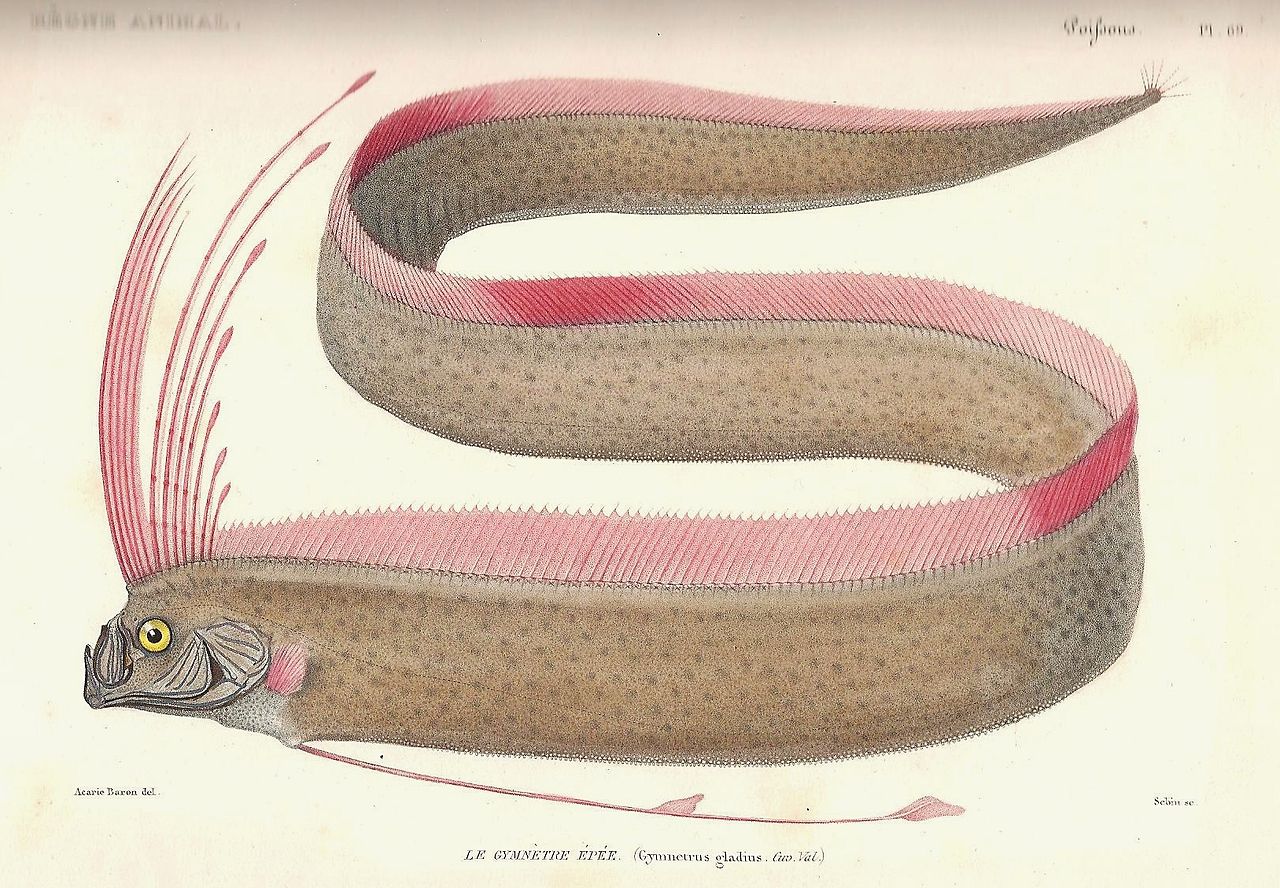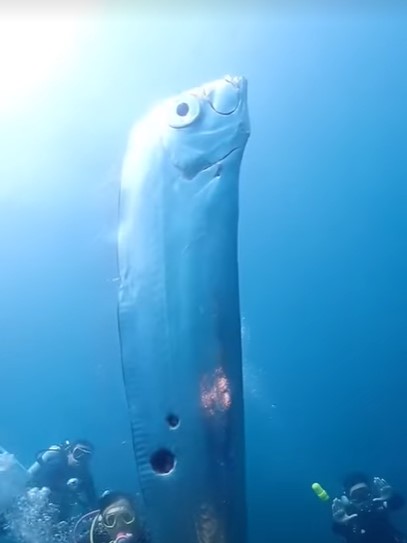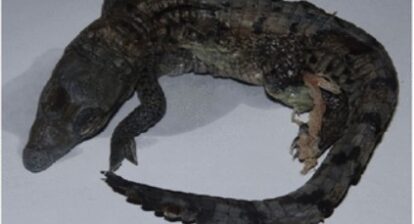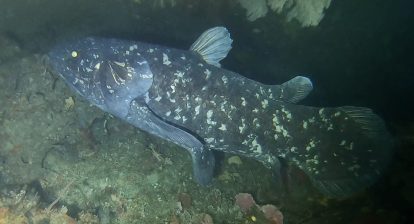Meet the very rare Giant Oarfish (Regalecus glesne), found throughout the deep waters of the tropics and subtropics. This one was found by scuba divers off the coast of Taiwan (Video Credit: @chengruwang on IG) floating near Ruifang District in Taipei. The fish seems to have several holes in its body, which are believed to be shark bites.
A very interesting (and perhaps scary) fact about this fish is that it (and the related R. russelii), are sometimes known as “earthquake fish” because they are popularly believed to surface before and after an earthquake.
It is one of the rarest fish in the world and is generally encountered by humans when it washes up dead on shores.

United States Navy SEALS holding a 23-foot (7.0 m) giant oarfish, found washed up on the shore near San Diego, California, in September 1996 (CC BY)
The Giant Oarfish is a large, long, sinuous fish and perhaps this is why it may have inspired the legends of giant sea serpents. With a slender silver body, this creature has long, red fins that resemble oars on its sides and a red dorsal fin along its entire length and crowns its head like a crest.

Giant Oarfish (CC BY)
The oarfish swims vertically, with its head up and tail down. It can also move both horizontally and vertically in the water. It is also the longest bony fish that we know of, and can grow up to a size of 9 metres (30.5 feet) and a weight of 300 kg (660 pounds).

Oarfish that washed ashore on a Bermuda beach in 1860: The fish was 16 ft (4.9 m) long and was originally described as a sea serpent. (CC BY)
Oarfish were first described in 1772 and subsequent rare encounters with divers, as well as accidental catches have added to what little we know of their behaviour and ecology. They are solitary animals and may frequent significant depths up to 1,000 m (3,300 ft).
Credit on Instagram.







